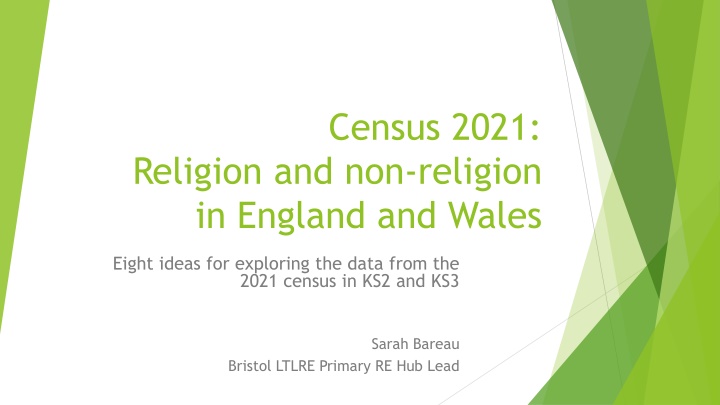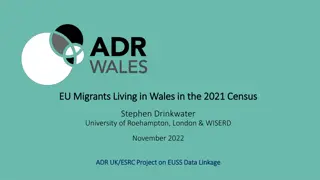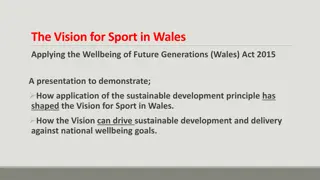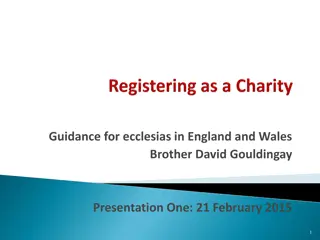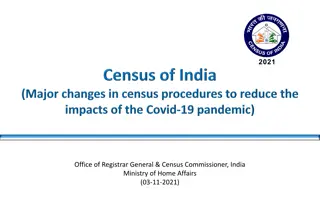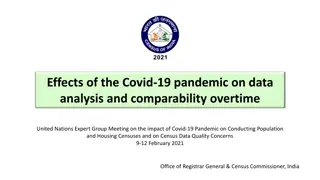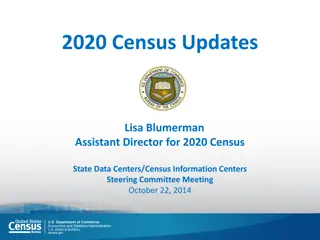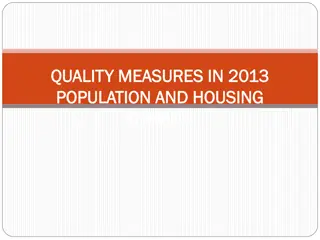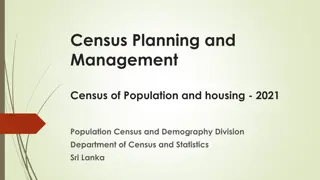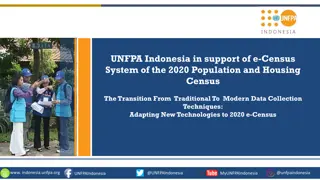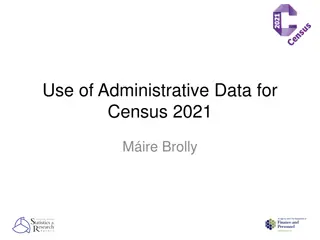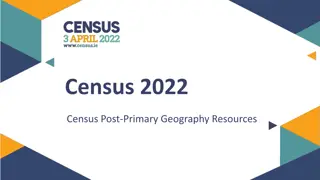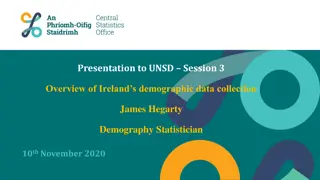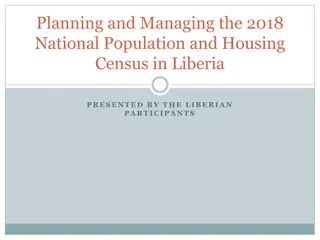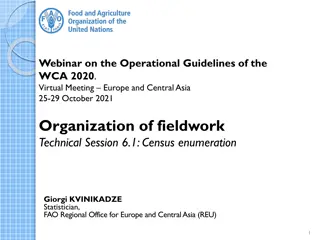Census 2021: Religion and non-religion in England and Wales
Explore ideas for analyzing the religion and non-religion data from the 2021 Census in England and Wales, aimed at KS2 and KS3 levels. Discover trends in percentages, compare global religious beliefs, investigate the distribution of different religions in various regions, and delve into the practices and beliefs of minority religions. Utilize resources to engage students in understanding cultural and religious diversity.
Download Presentation

Please find below an Image/Link to download the presentation.
The content on the website is provided AS IS for your information and personal use only. It may not be sold, licensed, or shared on other websites without obtaining consent from the author.If you encounter any issues during the download, it is possible that the publisher has removed the file from their server.
You are allowed to download the files provided on this website for personal or commercial use, subject to the condition that they are used lawfully. All files are the property of their respective owners.
The content on the website is provided AS IS for your information and personal use only. It may not be sold, licensed, or shared on other websites without obtaining consent from the author.
E N D
Presentation Transcript
Census 2021: Religion and non-religion in England and Wales Eight ideas for exploring the data from the 2021 census in KS2 and KS3 Sarah Bareau Bristol LTLRE Primary RE Hub Lead
Census 2021 The religion question was voluntary; 94.0% (56.0 million) of usual residents answered the question in 2021, an increase from 92.9% (52.1 million) in 2011.
Results from the 2021 Census https://www.ons.gov.uk/peoplepopulationandcommu nity/culturalidentity/religion/bulletins/religionengla ndandwales/census2021 This page includes summaries of the main findings from the census and a bar chart comparing the data from 2011 and 2021. Scroll down for an interactive map that shows results for each local authority in England and Wales.
1. Higher or lower? Show the names of different religions and worldviews. Ask the children if they think the percentage of people for each group has gone up or down since 2011.
2. Show me https://www.youtube.com/watch?v=A3nllBT9ACg Use the first minute and a half of this video to explore global percentages of religious belief. How does this compare to the data in England and Wales? Compare the results from 2001, 2011 and 2021 nationally, regionally or locally by drawing bar charts/pie charts. Scaffold the task as needed by providing pre-drawn charts that pupils can label. Use Microsoft Excel or a similar programme to create charts using given data. Use the Lesson 1 resources from https://bigideasforre.org/exemplar-units-of- learning/ BI5: INFLUENCE AND POWER: EXEMPLAR 1: What would this country miss if all the organised religions / worldviews disappeared?
3. Who, where, why? Most people identifying as Muslim live in urban areas. Why might this be? There are larger groups of people following other religions in Cornwall, Wales and the Mendips. What might these religions be and how are they linked to those locations? Use the map from the ONS site to explore where people with different religions and worldviews live.
4. Other religions Among the 405,000 (0.7% of the overall population in England and Wales) who chose to write-in a response through the "Any other religion" option were the following religions: Pagan (74,000), Alevi (26,000), Jain (25,000), Wicca (13,000) Ravidassia (10,000), Shamanism (8,000), Rastafarian (6,000), Zoroastrian (4,000) -How do followers of this religion live out their beliefs in their daily lives? Choose one of the minority religions to research. You might think about: -What are the key beliefs? -What are the origins of this religion? -Are there texts, festivals or places that are important in this religion?
5. The nones No religion was the second most common response, increasing by 12.0 percentage points to 37.2% (22.2 million) from 25.2% (14.1 million) in 2011. Of those who wrote-in a non-religious group to "Any other religion", the largest numbers were: Agnostic (32,000) Atheist (14,000) Humanist (10,000) Explore a range of non-religious worldviews. If you are a member of NATRE, you can access the Inspiring RE book Living Without God for ideas and resources: https://www.natre.org.uk/resources/termly- mailing/inspiring-re/living-without-god/
6. Read all about it! The same data was reported in different ways by different publications. Which facts did they choose to focus on? Why? https://www.theguardian.com/uk-news/2023/jan/30/census-data-england-wales-uk-non-religious-future- campaigners https://www.ft.com/content/c7bf3abe-e88c-4f9a-b6ee-076fa399bc5b https://humanists.uk/2022/11/29/non-religious-surge-37-tick-no-religion-in-2021-census-uk-among-least- religious-countries-in-the-world/ https://www.churchofengland.org/media-and-news/press-releases/we-are-here-you-archbishop- responds-census-findings https://mcb.org.uk/2021-census-as-uk-population-grows-so-do-british-muslim-communities/ https://www.dailymail.co.uk/news/article-11654511/Growing-number-Brits-practise-Satanism-England- Wales-Wicca-Shamanism-boom.html Write a newspaper article or blog post about the census data. What will your headline be? What are the most important facts you want to share? What do you want to tell people about those facts? What pictures would you choose to go with your article?
7. What next? The next census will take place in England and Wales in 2031. This will include responses from children who are now aged 10 and above. What questions should the census ask about religion and worldviews in 2031? What do you predict the census data will show in 2031? Why do you think this? Do you think the RE/Religion and Worldviews curriculum should change to reflect the findings of Census 2021? What should children be learning about in the future? Why?
8. Big Ideas https://bigideasforre.org/exemplar-units-of-learning/ BI5: INFLUENCE AND POWER: EXEMPLAR 1: What would this country miss if all the organised religions / worldviews disappeared? A unit of 11 lessons starting with exploring census data. It continues by learning about how the Church of England began, the influence it has had in the past and its role in current society.
